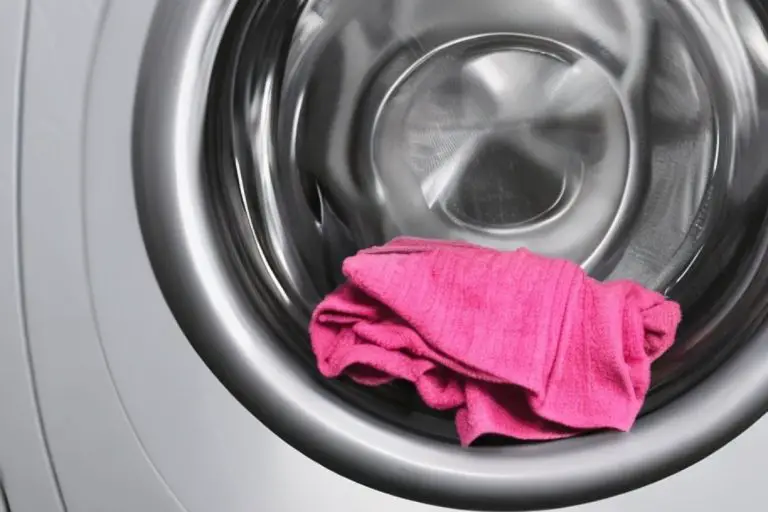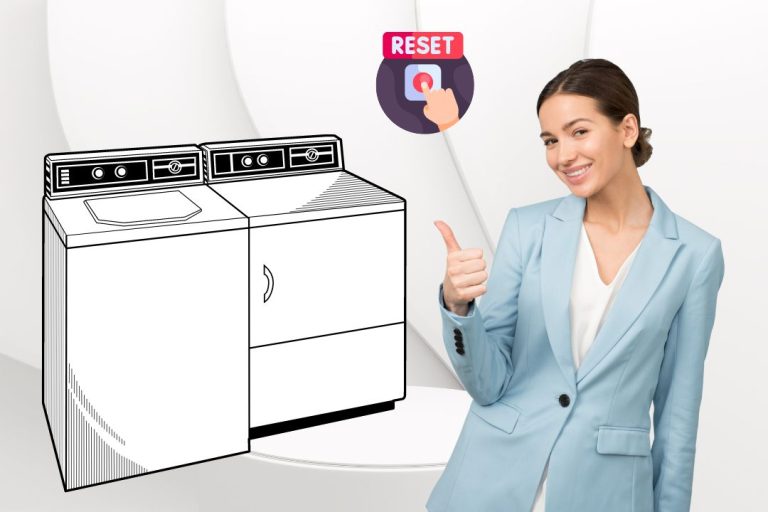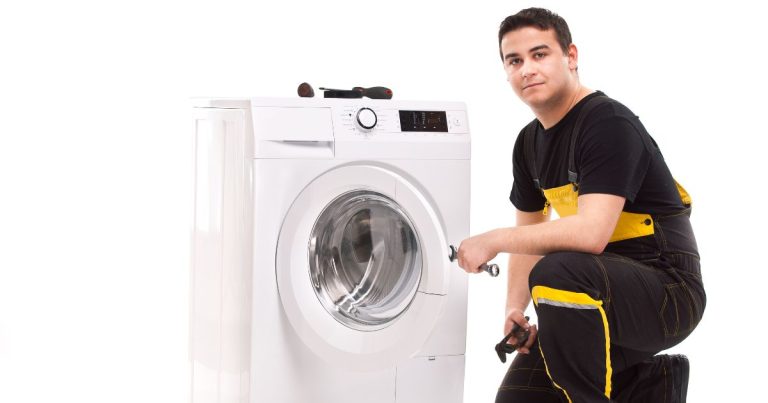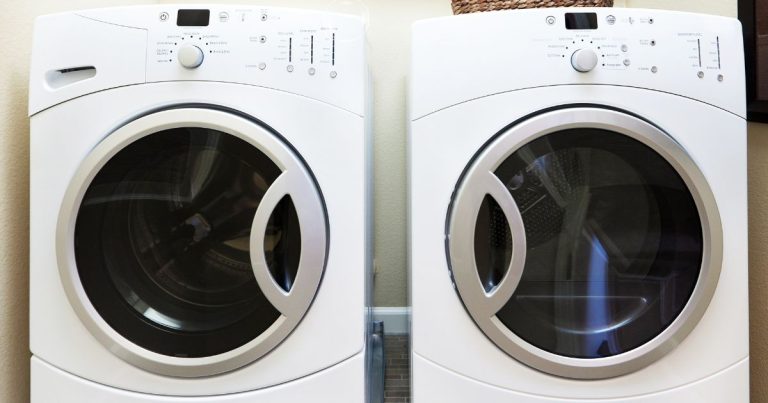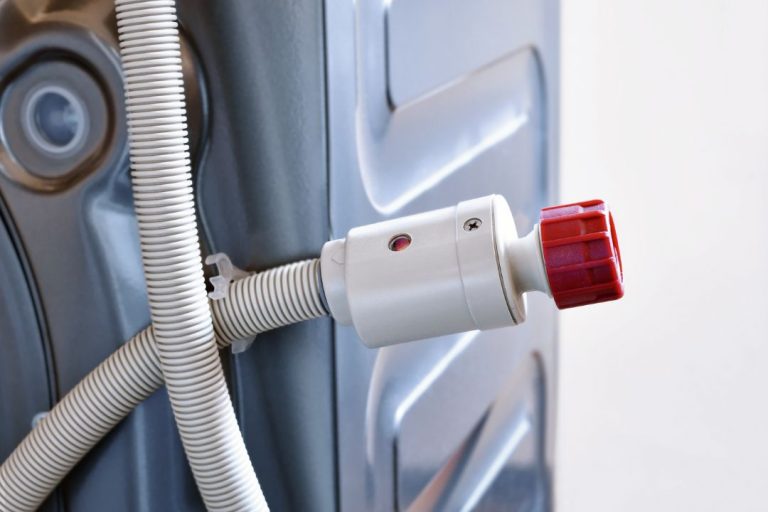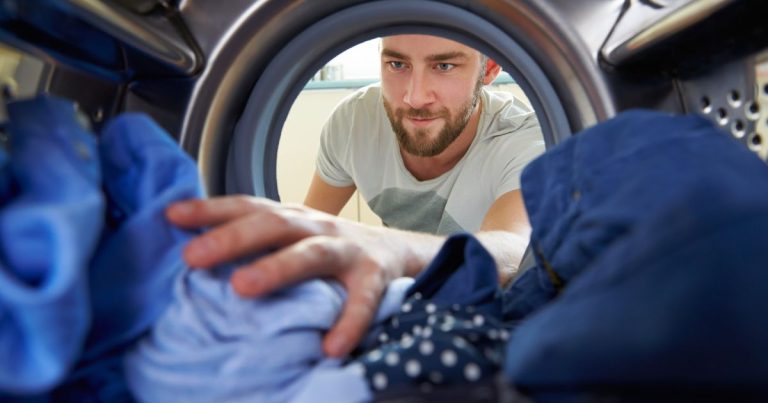Washing Machine Starts to Fill and Then Stops? (SOLUTION!)
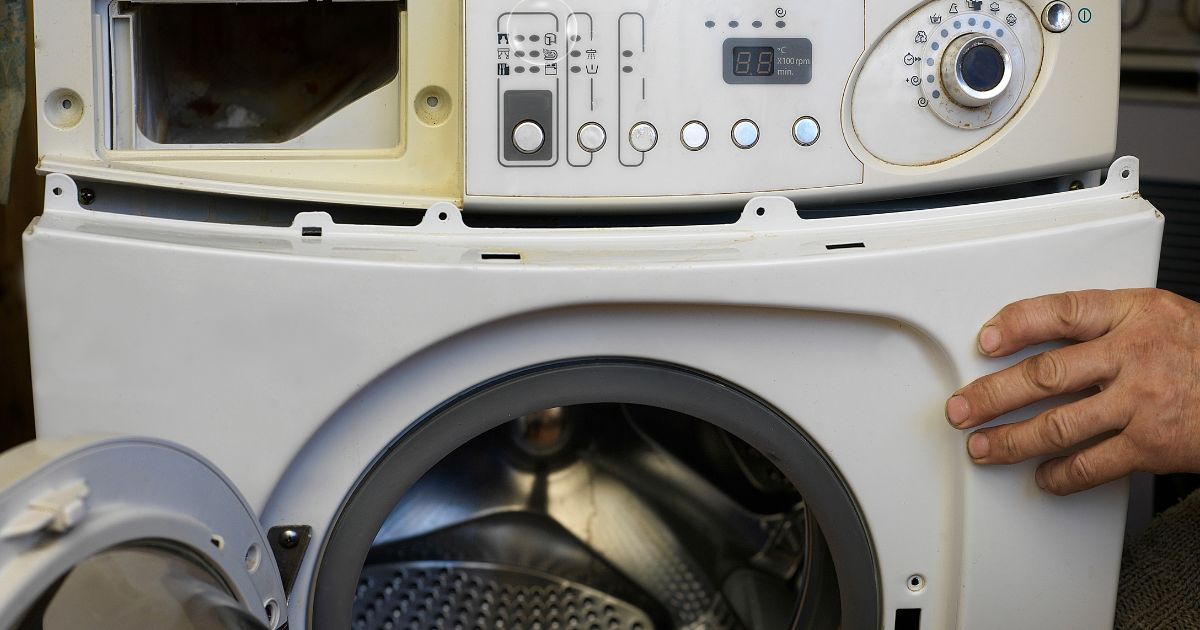
When you start your washing machine, the last thing you want it to do is fill up and then stop! Unfortunately, this can happen from time to time.
Fortunately, there are some tips and tricks that can help diagnose why this might be happening with your machine and how to get it back up and running quickly.
Read on to find out more about what could be causing an issue with your washing machine’s water filling process.
Washing Machine Starts to Fill and Then Stops?
If your washing machine starts to fill and then stops, it is likely due to a faulty water level switch. A water level switch monitors the amount of water in the washer and signals when it needs more or if too much has been added. If this component becomes stuck in an open position, the machine will keep filling until it overflows. To fix this issue, you should replace your washing machine’s water level switch as soon as possible.
Identifying the Problem: Washing Machine Fills and Stops:
Identifying the Problem: Washing Machine Fills and Stops When a washing machine starts to fill before it stops, this could indicate a range of problems.
Most commonly, these issues stem from either the water supply or an issue with the washer’s motor/pump.
Water pressure is sufficient:
First, homeowners should check that their home’s water pressure is sufficient for operation.
If not, they may need to install a booster pump to increase their pressure levels.
Additionally, the inlet hose should be checked for blockages or kinks which could limit flow and cause filling issues.
If there are no problems with the water supply then there may be an issue with the motor/pump itself; this usually occurs due to age-related wear and tear on certain parts such as belts or hoses, making them unable to operate correctly.
A qualified repairman can diagnose any of these potential causes so that repairs can be arranged if necessary.
11 Common Causes of a Washing Machine that Fills and Stops:
One of the most common issues with washing machines is when it starts to fill up with water and then abruptly stops.
This can range from minor inconveniences to serious problems, so it’s important to diagnose the problem as soon as possible.
Here are some of the most common causes for a washing machine that fills and then stops:
- 1. The pump blockage or impeller failure may be preventing the machine from draining properly, causing it to fill and stop repeatedly.
- 2. A faulty door switch can cause an interruption in communication between the control board and motor, resulting in a sudden stopping of operation once water enters into the drum.
- 3. If there is low voltage in your house’s electrical system, this could be impacting how efficiently your washer functions – including its ability to both fill up with water and spin correctly afterward.
- 4. Clogged filters can prevent proper drainage; if they become too backed up they can lead to a machine filling but not spinning at all afterwards..
- 5. Kinks or clogs on your hoses may also be impeding effective functioning; examine these hoses closely for any debris or damage that might have caused them over time..
- 6 Obstructions around the path of rotation like clothing items trapped near its axis may be responsible for a malfunctioning washer full of clothes but unable (or unwilling!) To move forward after being filled..
- 7 Loose connections on either end of wiring harnesses running through pumps are often overlooked yet easily fixable sources for why your washer has suddenly stopped responding after filling with water..
- 8 The drain hose itself could have been accidentally knocked away from its designated place during cleaning duties; check if this element needs re-seated before continuing onward with diagnosis..
- 9 Faulty pressure switches, which detect incoming levels during wash cycles, could also explain why you’re experiencing trouble getting started again after such interruptions take place…
- 10 Insufficient levels inside soap dispensers indicate clogged detergent holders potentially leading toward eventual malfunctions while attempting more than one load consecutively…
- 11 A broken belt connecting motor components together will render any attempts at starting again futile until replaced by an appropriate technician able willing versed in appliance repair techniques familiarized specifically with washing machines….
Troubleshooting Steps for Fixing a Washer That Won’t Finish Filling:
When a washing machine starts to fill, but then stops before it reaches the desired level, there are several possible causes.
Before attempting any major repairs, try these troubleshooting steps:
Check the water supply valves:
First, check the water supply valves. Make sure they’re both turned on and supplying adequate pressure.
This is usually indicated by a hissing or humming sound from the valve itself when you turn it on. If this isn’t working correctly, contact your local plumber for assistance.
Check the hoses that connect:
Next, check the hoses that connect to the back of your washer for kinks or blockages which can prevent proper flow of water into the appliance.
Clean out any debris and ensure that all connections are secure.
In addition, look for signs of leakage around these areas as well as other parts of your washer such as under or behind it where excess water may have pooled up from an undetected leaky hose connection in the past.
Inspect and clean out:
Finally, inspect and clean out any lint filters located near the bottom front of your washer if applicable to your model; clogged lint filters can cause problems with filling cycles too!
It’s also important to regularly run cleaning cycles with detergent-free hot water through your washer – this helps keep internal components free from buildup and ensures optimal performance throughout its life cycle.
Following these simple troubleshooting steps should help get rid of most issues related to your washer not finishing filling properly!
How to Reset a Washing Machine?
Resetting a washing machine can be an effective way to get it back up and running if it starts to fill and then stops.
The first step is unplugging the appliance from its power source. Wait for at least 10 minutes, then plug your washing machine back in again.
If this doesn’t work, check the drain hose to ensure that there are no blockages or kinks in the pipe. It’s also important to make sure that all connections are secured properly and not loose.
If these steps don’t resolve the issue, you may need to reset your appliance manually – meaning accessing certain components inside of it directly.
Locate where any circuit breakers or fuses are located on your washer and switch them off for about 15 seconds before switching them back on again.
You should also take care when handling electrical components as this could be potentially dangerous without appropriate safety gear or procedures being followed correctly.
Finally, consider cleaning out any lint trays which have been collecting dust around the edges of your machine over time; dirt particles can interact with other parts causing problems like yours where it fills but won’t begin a cycle afterwards!
Easy Steps:
1. Unplug the washing machine from the power outlet.
2. Locate the reset button on the washing machine.
3. Press and hold the reset button for 10 seconds.
4. Release the reset button and wait for the washing machine to reset
5. Plug the washing machine back into the power outlet.
6. Select a cycle and start the washing machine.
Important Safety Tips When Working on a Washing Machine:
When working on a washing machine, safety is of utmost importance. There are several steps you should take to ensure your safety when attempting to diagnose and fix the issue.
Unplug the power source:
First, it is important that you unplug the power source from any appliance before beginning work on it.
This will prevent electric shock or serious injury if something goes wrong during the repair process.
Wiring connections:
Additionally, any wiring connections should be double-checked for loose or frayed wires as these can present a major hazard when live electricity passes through them.
It is also essential to wear protective gear such as goggles and gloves while handling internal parts of the washing machine in order to avoid cuts and burns caused by sharp edges or hot surfaces inside the unit.
Furthermore, make sure that you keep all tools away from moving parts because they can cause electrical malfunctions or even breakage when getting caught up in motors and other components.
Hazardous chemicals:
Finally, many washers contain hazardous chemicals within their plumbing systems so it’s important to never open any pipes without proper protection such as gloves and masks if necessary.
Following these tips will help ensure a safe repair experience with minimal risk of injury or damage to yourself or your home appliances!
Front loading washing machine fills with water then stops:
Front loading washing machines are a great option for laundry day. They offer convenience and efficiency, reducing the time needed to complete the wash cycle.
Unfortunately, sometimes these machines can be frustrating when they start to fill with water but then suddenly stop.
This issue is usually caused by a faulty or clogged water inlet valve.
The valve is responsible for controlling the flow of water into your machine so if it fails to open properly, no water will enter the appliance and you’ll need to replace it in order for it to work again.
If this isn’t the case however, there could be an issue with low water pressure or a blocked filter within your household plumbing system that needs addressing before you can use your washing machine again effectively.
If neither of these seem like likely causes of why your front-loading washer won’t fill with enough water then another common reason could be because of something blocking the internal hoses where the appliance takes its supply from which may require further investigation from a professional technician as they have access points that you wouldn’t normally see at first glance.
Overall, having a front-loading washing machine that won’t fill up correctly can be very annoying but luckily there are some simple solutions available on how best to repair them so make sure you get it sorted out sooner than later!
Professional Appliance Repair Services for Malfunctioning Washers:
Professional appliance repair services are essential for malfunctioning washers, such as when a washing machine starts to fill and then stops.
A qualified technician can diagnose the problem quickly and provide expert repairs, ensuring that your laundry is done in no time.
In most cases, a faulty water valve or float switch is to blame for this issue. The float switch monitors the amount of water in the tub and triggers a signal to shut off the incoming water if it becomes too full.
If this device fails, it may not be able to send out that signal correctly and cause your machine to fill until overflowing.
The valve itself also needs inspection; this controls how much water enters from each source (hot/cold), so it could be blocked or damaged in some way which results in improper filling levels.
Your local technician will inspect both components carefully and make any needed replacements or adjustments with genuine parts designed specifically for your model of appliance – never generic alternatives!
With their experience they can swiftly identify potential issues before they turn into costly breakdowns, while giving you peace of mind that their work is reliable with warranties provided on all labor performed.
Maytag washer starts to fill then stops:
When a Maytag washer starts to fill and then stops, it is usually due to an error code being displayed or the washer simply not functioning properly.
There are several possible causes of this issue, including kinks in the water supply line, clogged drain hose, electrical problems with the washer’s circuit breaker or wiring, faulty pressure switch or lid switch assembly.
In order to diagnose why a Maytag washer starts to fill but then stops during its cycle, check for visible signs of damage such as broken hoses or wires.
If there are no visible signs of damage, unplug the appliance and locate any access panels that could hide potential issues.
Check inside for any blockages in the water supply line which can prevent proper flow into the tub area and lead to premature stopping of a washing machine cycle.
Be sure that both hot and cold water valves are turned on fully when attempting this inspection.
If cleaning out any kinks from your lines does not fix your problem with a Maytag Washer starting but then stopping shortly after filling up with water; you should consider replacing either your pressure switch or lid switch assembly if available depending on model type/age .
Doing so could help get your machine running again as these two components serve important functions related to proper operation and safety purposes during each wash cycle.
How do you fix a washing machine that keeps stopping?
If your washing machine keeps stopping, there are several possible causes that need to be considered and addressed.
Check the power supply:
First, check the power supply; make sure it’s securely connected and firmly plugged in. If no fault is found with the electricity connection then you may have a problem with the timer or water switch inside the washing machine.
Inspecting internal components such as these requires technical expertise and knowledge of how they work together within your specific model of washing machine.
It’s best to contact an appliance repair service if you don’t feel comfortable attempting repairs yourself.
A qualified technician can diagnose the issue accurately and efficiently, ensuring that any necessary repairs are carried out correctly.
The most common cause of a stopped washing machine is a blocked drain filter which traps dirt particles from dirty laundry over time until eventually making its way into the pump impeller or valve housing – both important parts for draining water away from your washer during cycles.
Cleaning out this filter should help restore normal functioning but again, unless you know what you’re doing it’s best to leave this job to a professional who has experience dealing with these kinds of issues in different models of appliances.
Conclusion:
The issue of a washing machine filling and then stopping can be a frustrating one.
It can be caused by a variety of issues, from a clogged drain hose to a faulty water inlet valve. Fortunately, most of these issues can be easily fixed with a few simple steps.
First, check the drain hose for any blockages or kinks. If the hose is clear, then the next step is to check the water inlet valve for any signs of damage or malfunction. If the valve is damaged, it should be replaced.
If the valve is functioning properly, then the issue may be with the water pressure or the water level switch. If the water pressure is too low, then the water level switch may need to be adjusted.
If the water level switch is not functioning properly, then it should be replaced. With a few simple steps, most of these issues can be easily fixed and your washing machine will be back up and running in no time.

